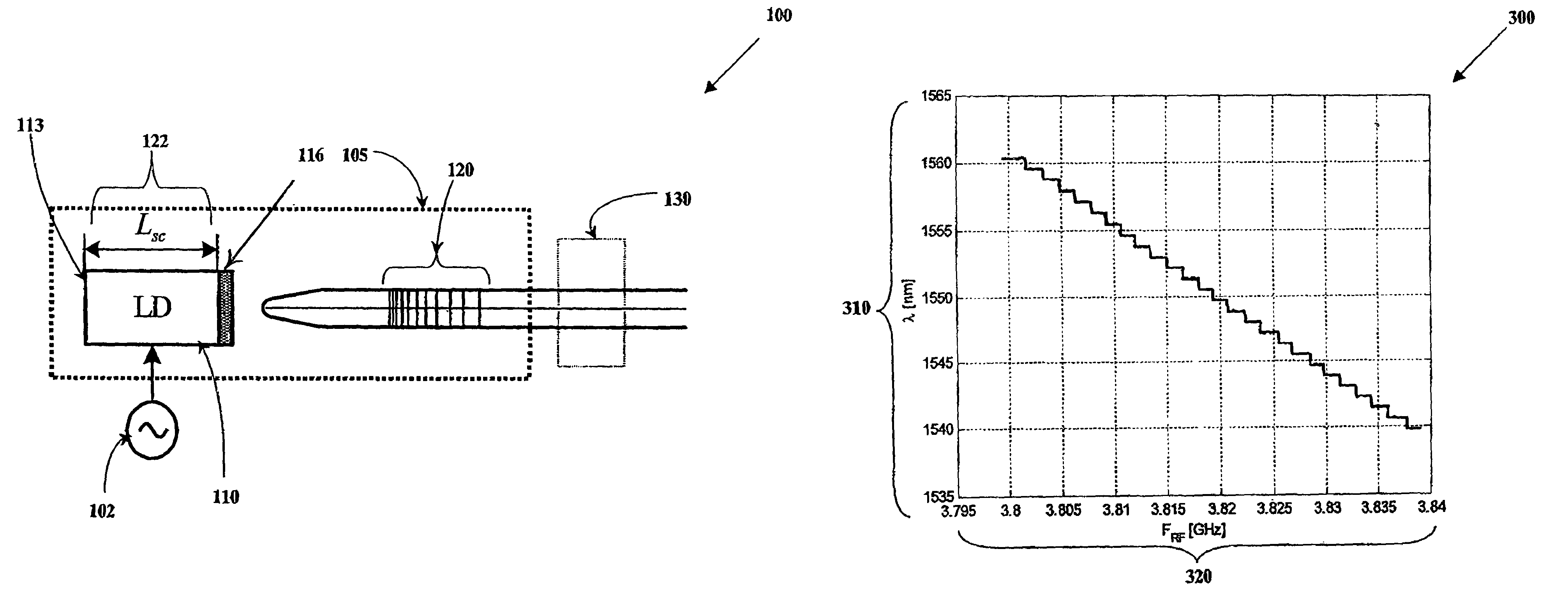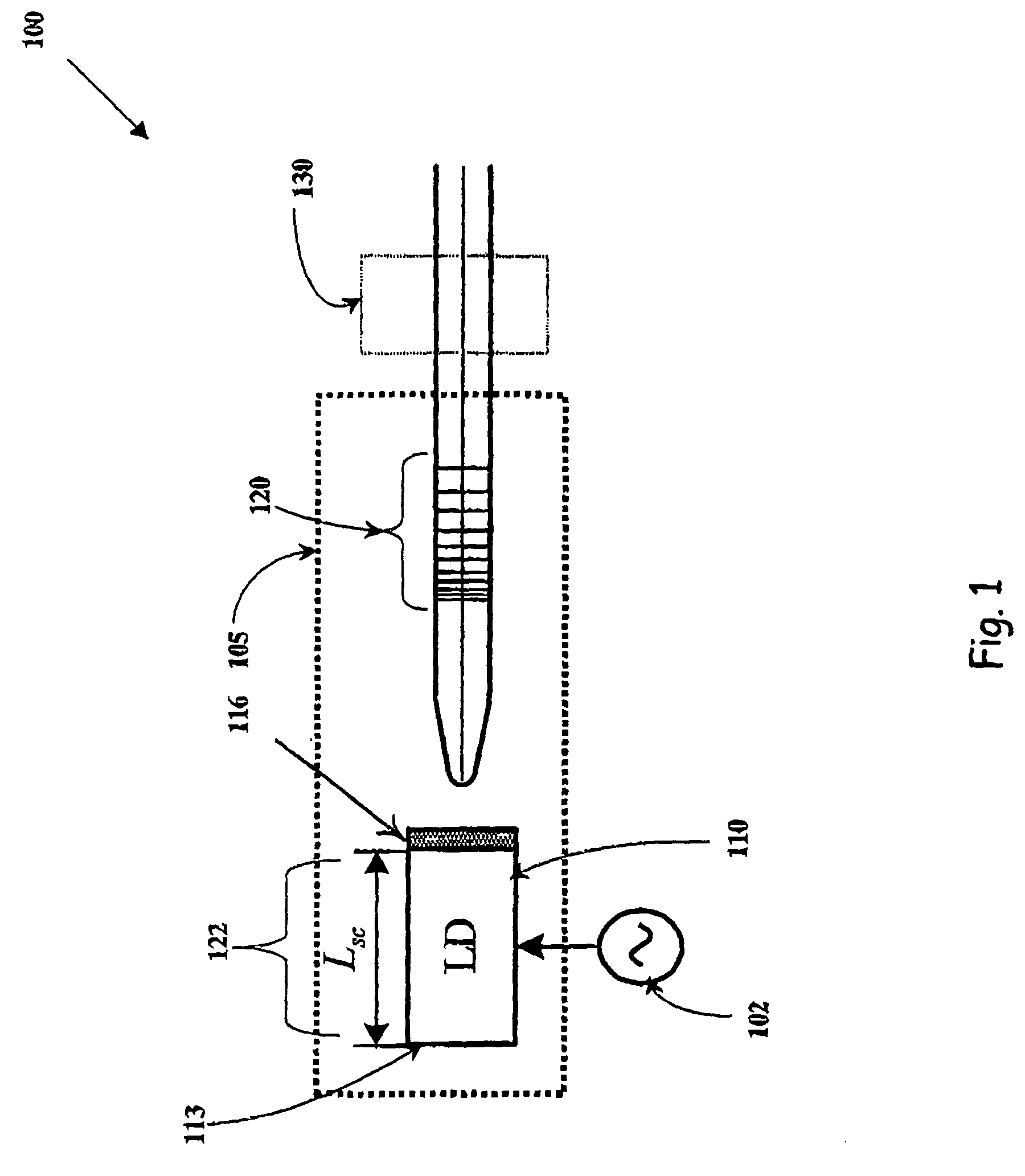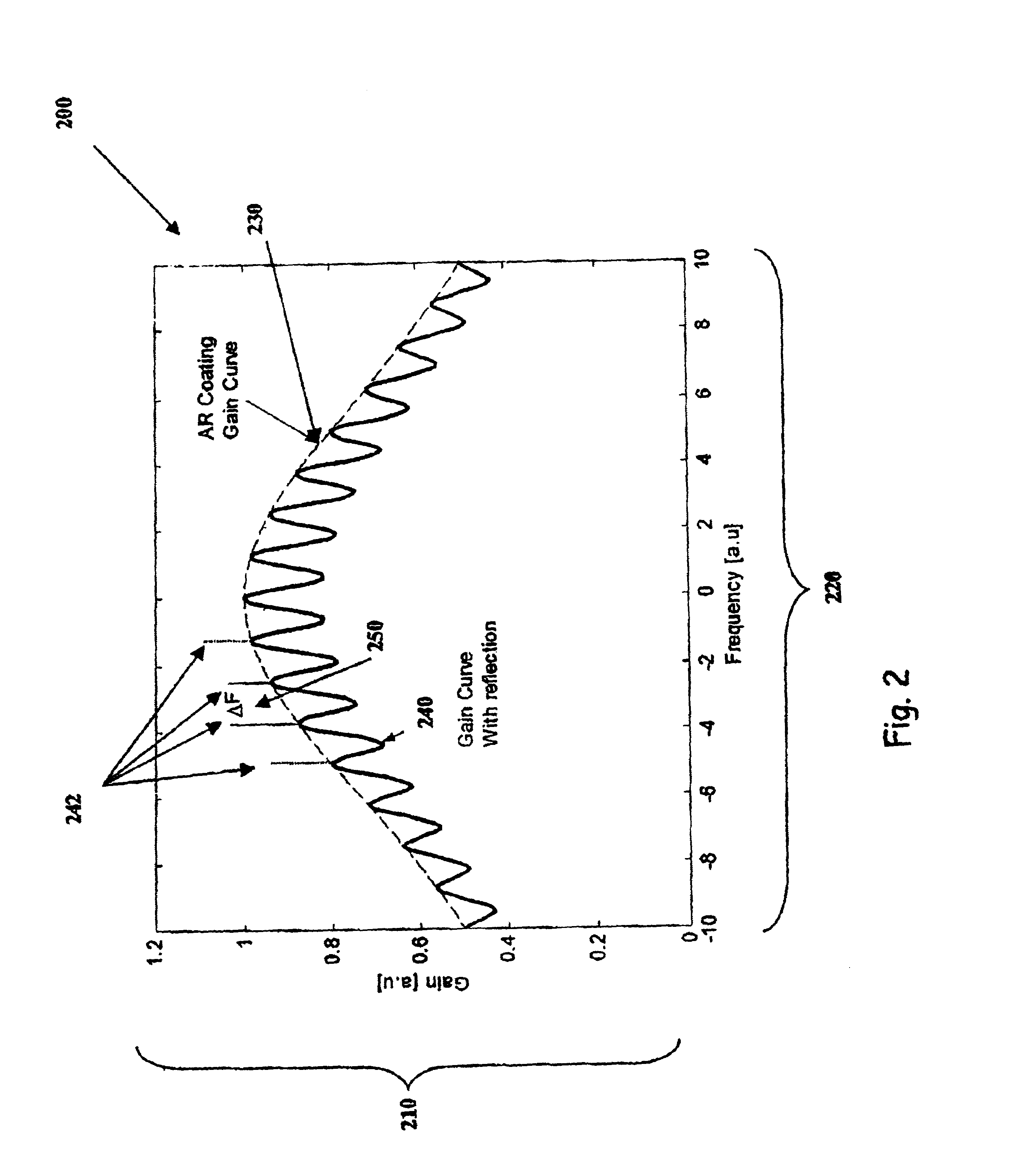Tunable laser with a fixed and stable wavelength grid especially useful for WDM in fiber optic communication systems
a fiber optic communication system and wavelength grid technology, applied in the direction of lasers, laser optical resonators, angle demodulation, etc., can solve the problems of limited dynamic change ability, large discrepancies, and insufficient development, and achieve high reflection (hr) coating and effectively modulate the gain curve of the semiconductor amplifier
- Summary
- Abstract
- Description
- Claims
- Application Information
AI Technical Summary
Benefits of technology
Problems solved by technology
Method used
Image
Examples
Embodiment Construction
[0019]Referring now to FIG. 1, there is shown a schematic illustration of an exemplary embodiment a system 100 for wavelength tunable optical transmitter, constructed and operated according to the principles of the present invention.
[0020]System 100 shows a laser cavity 105 having a laser diode 110, for use as the gain element, with a chirped grating 120. Laser diode 110 has at one end a broad band high reflective coating (HRC) 113, and at the other end a partial reflective coating (PRC) 116 to allow interaction with chirped grating 120, thus extending the laser diode cavity 110 to chirped grating 120. The laser is an active modulation element using a biased sinusoidal current source 102 with a frequency fRF, that provides the mode-locking for the specific cavity length formed by HRC 113 mirror, and a portion of the chirped grating located at integer multiples of L=(c / n) / (2nfRF) from HRC 113. The central reflectivity of this portion determines the laser-emitted wavelength.
[0021]Alte...
PUM
 Login to View More
Login to View More Abstract
Description
Claims
Application Information
 Login to View More
Login to View More - R&D
- Intellectual Property
- Life Sciences
- Materials
- Tech Scout
- Unparalleled Data Quality
- Higher Quality Content
- 60% Fewer Hallucinations
Browse by: Latest US Patents, China's latest patents, Technical Efficacy Thesaurus, Application Domain, Technology Topic, Popular Technical Reports.
© 2025 PatSnap. All rights reserved.Legal|Privacy policy|Modern Slavery Act Transparency Statement|Sitemap|About US| Contact US: help@patsnap.com



